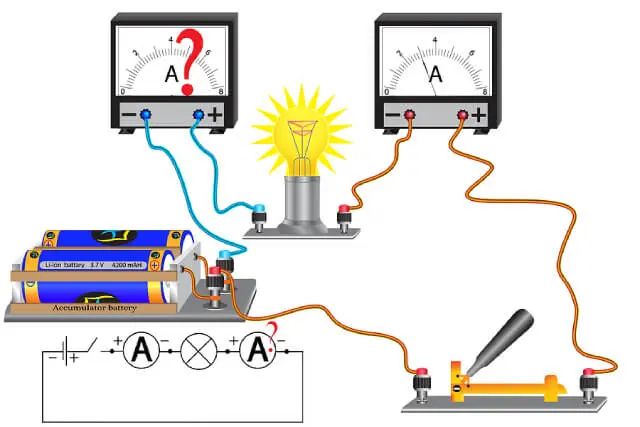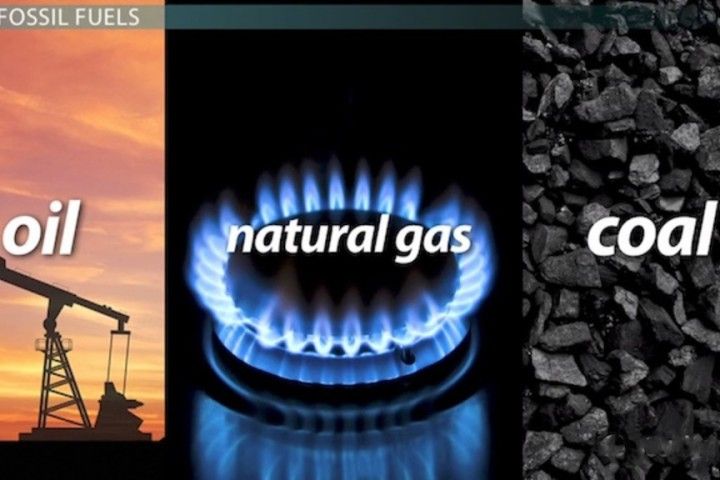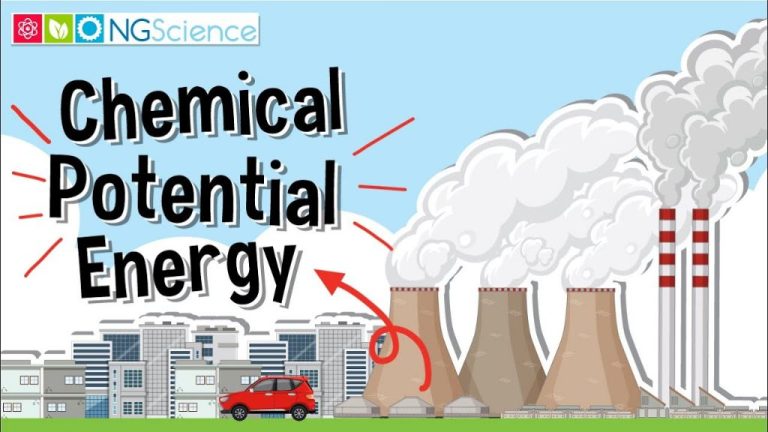Is Pure Energy A Thing?
What Is Pure Energy?
The fundamental nature of energy has fascinated humans since the origin of philosophical thought. Over the centuries, natural philosophers and scientists have pondered the essence of energy and its role as the animating force behind all matter and life. In physics, chemistry, and other natural sciences, energy takes many specific forms that interact in complex ways. But is there such a thing as “pure” energy – some common currency that underlies all these manifestations?
This article will examine the core concepts around energy and matter. We’ll explore whether physics allows for the existence of pure energy, distinct from mass and matter. Insights from Einstein’s famous equation E=mc2 will shed light on the interconvertibility of mass and energy. We’ll also survey how different scientific fields, from physics to biology, understand and apply the notion of energy. Our goal is to probe this profound topic for insights into the essence of energy itself.
Forms of Pure Energy
Pure energy, also called free energy, refers to any form of energy not associated with matter. Pure energy is massless and can take different forms such as electromagnetic radiation, thermal energy, sound waves, and more.
Some examples of pure energy include:
- Electromagnetic radiation like radio waves, microwaves, infrared, visible light, ultraviolet, x-rays, and gamma rays. Electromagnetic energy travels through space in the form of oscillating electric and magnetic fields.
- Thermal energy or heat that results from the motion of atoms and molecules. Heat is a form of kinetic energy associated with the random movements of atoms and molecules.
- Sound energy in the form of pressure waves that travel through matter like air, water or solids. Sound waves involve oscillations of pressure transmitted through a medium.
Pure energy has no rest mass, meaning it has no defined volume or shape. This distinguishes pure energy from matter which has mass and occupies space. Converting energy to matter or vice versa is possible as described by Einstein’s famous equation E=mc^2. But energy itself has no intrinsic mass.
Understanding the different forms pure energy can take is important across physics, chemistry, and engineering when studying thermal systems, electromagnetic radiation, acoustics, and other phenomena.
Matter vs Energy
Matter and energy are the two fundamental constituents of the universe. While matter has mass and occupies space, pure energy does not have mass or volume. However, matter and energy are interconvertible through physical processes.
Matter refers to any substance that has rest mass and volume. Examples include atoms, molecules, objects, etc. Matter is composed of particles like electrons, protons, and neutrons. The mass of an object comes from the energy of the particles it contains.
In contrast, energy itself does not contain particles or mass. Forms of pure energy include electromagnetic radiation (e.g. light), thermal energy (heat), and kinetic energy (motion). Energy is the capacity to do work or apply force to matter. It exists as waves or fields rather than discrete particles.
Matter can be converted into energy through nuclear reactions. The most well-known example is nuclear fission, where the nucleus of a heavy atom like uranium splits into smaller nuclei, releasing enormous amounts of energy. This is the process used in nuclear power plants.
Another matter-to-energy conversion process is nuclear fusion, which powers stars like our sun. Hydrogen nuclei fuse together under intense heat and pressure to form helium, converting some of the mass into energy. The famous E=mc2 equation devised by Einstein quantifies the equivalence between matter and energy.
So in summary, matter and energy are distinct entities, but physical processes can convert one into the other. This demonstrates that energy is something that can exist in a pure form without mass or volume.
Energy Conservation
The law of conservation of energy states that energy can neither be created nor destroyed, only converted from one form to another. This means the total amount of energy in an isolated system always remains constant. Energy can change forms between kinetic energy, potential energy, thermal energy, chemical energy, nuclear energy and more, but the total quantity of energy never changes.
For example, when a ball falls, its potential energy is converted to kinetic energy. The chemical energy stored in a battery can be converted to electrical energy and heat. In nuclear fission, mass is converted into energy. In all these examples, energy is changing forms but the total amount of energy stays the same.
The law of conservation of energy is one of the basic laws of physics and has profound implications. It means the total energy content of the universe always remains the same. This law allows us to track energy transfers and transformations for practical applications. It also tells us that energy cannot be created from nothing or destroyed into nothing.
Measuring Energy
Energy is measured in a variety of different units depending on the system or context. Some common units used to measure energy include:
– Joules: The joule is the standard unit of energy in the International System of Units (SI). One joule is defined as the amount of work done when a force of one newton moves an object one meter. Joules are commonly used to measure energy in mechanical, electrical, and other physical systems.
– Calories: The calorie was originally defined as the amount of energy needed to raise one gram of water by one degree Celsius. Calories are commonly used to measure energy in chemical and biological systems, especially related to nutrition and diet.
– Electron volts: The electron volt is a unit of energy equal to the amount of energy gained by a single electron moving across an electric potential difference of one volt. It is commonly used in atomic and subatomic physics to measure energy levels and interactions.
– BTUs: The British Thermal Unit (BTU) is a traditional unit of energy often used to measure energy content in fuels, as well as heating and cooling systems. One BTU is the amount of energy needed to raise the temperature of one pound of water by one degree Fahrenheit.
– Kilowatt-hours: The kilowatt-hour is a unit of energy representing one kilowatt of power sustained for one hour. It is commonly used to measure energy consumption, such as for electric devices and household energy use.
There are many other more specialized units for measuring energy depending on the specific context and field of science or engineering. But joules, calories, electron volts, BTUs, and kilowatt-hours are some of the most common units used to quantify energy across different systems and applications.
Energy in Physics
Energy is a fundamental concept in physics that is tied to many key principles and equations. Here’s an overview of how energy relates to physics:
Work and Force: Energy is related to work, which is defined in physics as force applied over a distance. The amount of work performed on an object equals the force exerted on the object multiplied by the distance it moves. This work changes the energy of the object. The energy transferred into or out of a system due to work is known as work energy.
Kinetic Energy: Objects that are in motion have kinetic energy equal to half their mass multiplied by their velocity squared. This is the energy associated with motion.
Potential Energy: There are various forms of potential energy in physics based on an object’s position or arrangement. Gravitation potential energy depends on an object’s height in a gravitational field. Elastic potential energy refers to energy stored in deformed materials. Chemical potential energy is energy stored in the chemical bonds of atoms and molecules.
Conservation of Energy: The total energy in an isolated system remains constant. Energy can change forms between kinetic, potential, thermal, and others, but the total amount of energy is conserved according to the first law of thermodynamics.
Power: Power is defined as the rate at which work is done or energy is transferred. The SI unit of power is the watt (W), which equals one joule of energy transferred per second.
Energy in Chemistry
Chemical energy is stored in the bonds between atoms and molecules. This energy gets released or absorbed during chemical reactions when these bonds are broken or formed.
For example, when hydrogen and oxygen combine to form water (H2O), the chemical bonds holding the hydrogen and oxygen atoms in the water molecule contain less energy than the bonds that were broken in the original hydrogen and oxygen molecules. The excess energy gets released as heat during the reaction.
The energy stored in molecular bonds comes from electromagnetic forces between the positively charged atomic nuclei and the negatively charged electrons. The strength of these forces, and thus the amount of potential energy stored, depends on the types of atoms, their molecular structure, and bond order.
Chemical energy drives many important processes. Our bodies use chemical energy stored in the bonds of food molecules, like fats and sugars, to power cellular processes. Burning wood or fossil fuels releases chemical energy that can be converted to mechanical energy or electricity.
Understanding the energy stored and transferred in chemical reactions allows chemists to predict whether reactions will occur spontaneously and how much energy will be produced or absorbed.
Energy in Biology
Living organisms require energy to perform all vital functions and sustain life. At the cellular level, energy is used for processes like metabolism, transport of molecules, cell division and muscle contraction. On an organismal level, animals use energy for movement, temperature regulation and all internal systems. Plants acquire energy through photosynthesis to synthesize complex molecules from simple inorganic compounds. Ultimately, the energy in biology comes from the food organisms eat. This chemical energy from food is transferred and transformed into forms usable by the cell. For example, the chemical bonds in glucose molecules are broken down through cellular respiration, producing ATP molecules that fuel other cell activities. The conservation of energy applies to biological systems as well. The amount of energy stored in food consumed by an organism equals the energy used for biological work plus the energy lost as heat due to inefficiencies in energy transfer.
Energy plays a central role in facilitating all the biochemical reactions, material and heat transfers, movements, and environmental interactions needed to sustain life. From metabolic reactions to the complex behaviors of whole organisms, life processes require constant energy input, transfer and transformation. Understanding the biological role of energy provides insight into how cells, organisms and ecosystems function.
Practical Applications
Pure energy can be harnessed for practical use in many ways that benefit human society. Here are some key examples:
Fuel: Gasoline and other liquid fuels are a concentrated form of chemical energy that can be burned to release heat and power engines. Refining and extracting fuel from natural resources like crude oil allows us to utilize their stored chemical energy.
Batteries: Batteries store chemical energy and release it slowly as electrical current. The chemical reactions inside batteries convert the pure electrochemical energy into a flow of electrons that can then power devices.
Solar Power: Solar panels capture pure radiant light energy from the sun and convert it into electrical current that can be used to power homes, appliances, and more. Solar energy gets converted directly into electrical energy.
Wind Power: The kinetic energy of moving air gets transformed into mechanical power by wind turbines, which then generate electricity. Wind is an indirect form of solar energy resulting from atmospheric heating.
Hydro Power: The potential energy stored in water at a height gets converted to electricity by hydropower plants, which utilize gravity and the flow of water to spin large turbines. Dams provide a reservoir of potential hydro energy.
By intelligently capturing, converting and utilizing various natural forms of pure energy, humans are able to power an advanced technological civilization.
Conclusion
It’s fascinating to unravel the mystery of pure energy and discover all the ways it manifests itself in the world. It’s not just some abstract concept but a very real phenomenon that can be measured and quantified. The law of conservation of energy tells us that energy can be transformed but never created or destroyed. While matter has mass, energy is pure and massless. Forms of energy include kinetic, potential, thermal, chemical, nuclear, electromagnetic, elastic, radiant, and more. Energy flows through all systems from biology to chemistry to physics. It powers life and technology. From photosynthesis to electricity, our modern world runs on harnessing forms of energy for practical use. Though energy remains an elusive concept, we can study and measure its various forms. Pure energy is very much real, not just a theoretical notion. With scientific analysis and calculation, we gain greater insight into this foundational force of nature that shapes our universe. The depth and breadth of energy in all its forms is truly astonishing.





